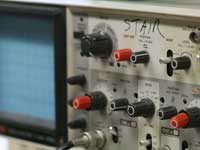ICEP - Institute for Catalysis in Energy Processes

The Institute for Catalysis in Energy Processes (ICEP) is a joint venture of the Northwestern University Center for Catalysis and Surface Science (NU) and Argonne National Laboratory (ANL). It is organized into two (2) highly integrated efforts: Chemical Catalysis: Manipulation and Understanding of Oxidation Catalysts and Photocatalysis: Reduction of Carbon Oxides. As discussed in the research narrative, the scientific questions addressed by these themes are directly relevant to the efficient use of the nation’s resources, to reducing its reliance on overseas sources of energy for transportation fuels, and to reducing or reversing the emission of carbon dioxide. Major strengths of ICEP are in synthesis of catalytic materials, in measurements that reveal catalyst properties and chemistry, and in theory and modeling to understand properties, measurements, and chemistry. In many cases ICEP researchers are the inventors or developers of the methods that can be brought to bear on catalytic systems. The ICEP organization and emphasis has evolved over several years in order to optimize the contributions of the world-class participants from NU and Argonne.
Scientific Themes
Chemical Catalysis: Manipulation and Understanding of Oxidation Catalysts
The long range goal of the Chemical Catalysis subtask is to advance the understanding of oxidative activation and transformation of hydrocarbons relevant to energy, particularly the light alkanes methane, ethane, and propane. Primary objectives of the proposed research are to elucidate the nature of the various catalytically active surface oxygen species and to learn how they may be manipulated via the material composition and structure. The proposed research will emphasize studies of catalytic reactions whose rates and selectivity are diagnostic of the nature of active oxygen species. One common theme of the proposed work is to employ structural manipulation of the active catalytic sites to investigate how this influences selectivity and activity.
Photocatalysis: Reduction of Carbon Oxides
Understanding the elementary steps in the photocatalytic reduction (PCR) of CO2 is one of the two major research themes of the ICEP. Specific issues to be addressed have been grouped into the following three areas: 1) Understanding the nature of the initially adsorbed species, determining how specific surface features affect CO2 physisorption or chemisorption, and developing a detailed, molecular level, characterization of the structure of the photoactive adsorption sites; 2) Understanding the fate of photo-generated electron hole pairs, how charge transfer takes place, and how charge transfer is affected by different materials and their preparation; 3) Identifying the subsequent reactive steps after activation of the initially adsorbed species and how these steps depend on the photocatalytic material and modification of the photocatalyst with supported metal oxides, metal clusters, or other functional moieties.

